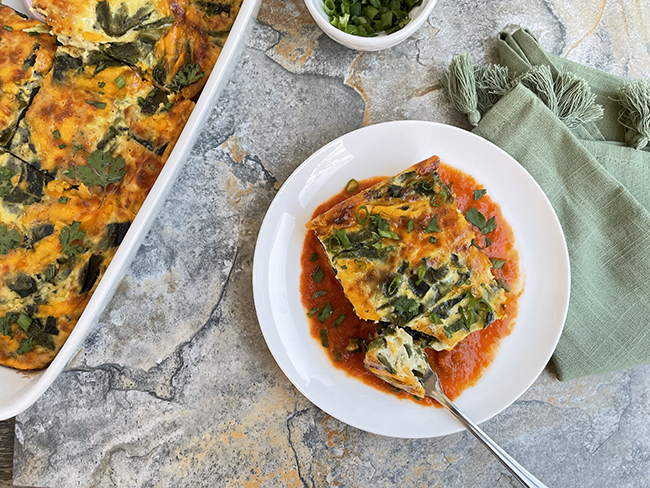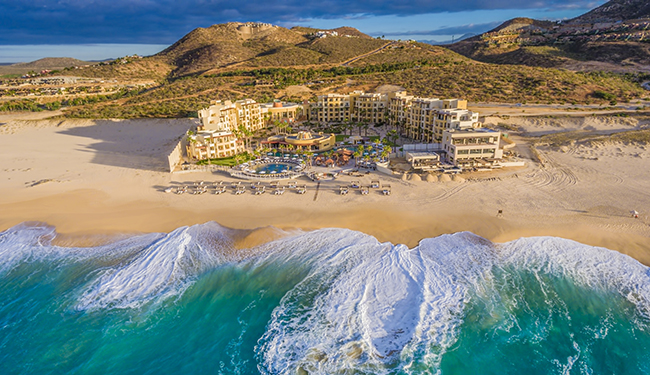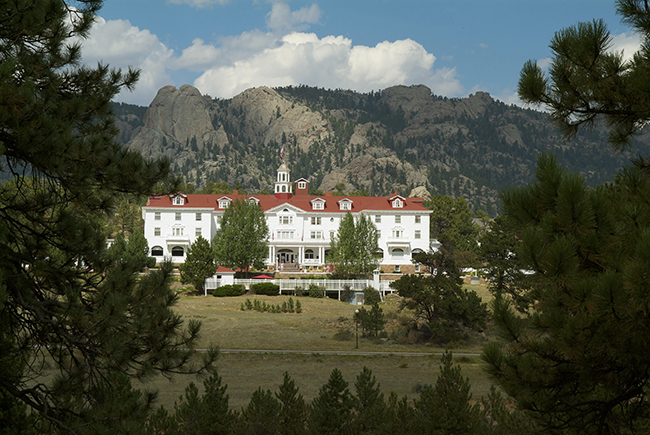Pastel Paradise
05 Feb 2024
Exploring the Yucatán Peninsula
By Irene Middleman Thomas
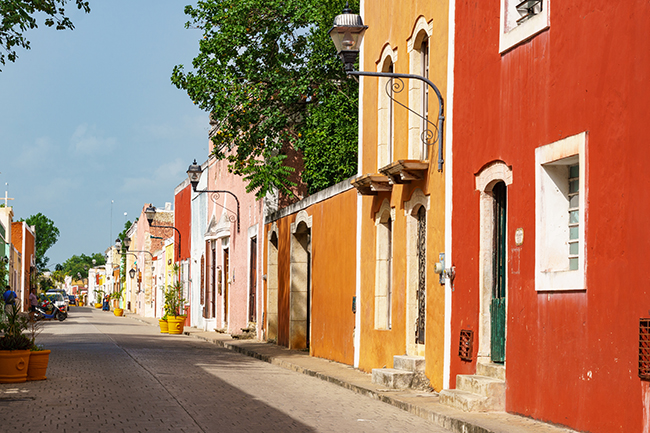
Cancún, Playa del Carmen, Tulum, Cozumel and Isla Holbox continue to lead in tourist visits. During the first half of 2023, these beach towns received more than 3.1 million
U.S. travelers.
Granted, the turquoise Caribbean is a huge draw, but savvy adventurers just might want to go beyond the usual. The diverse, fascinating and Mayan-influenced Yucatán is home to five Mexican states. It offers a whole different Mexico, with flamingos, pink lagoons, crocodiles, mangrove biospheres, 3,000 cenotes, Mayan ruins, delightfully preserved colonial cities and a delectable gastronomy unlike any other.
Yucatán cuisine is a delicious treasure hunt and differs from what most people consider “Mexican” food. It includes influences from the local Maya cuisine, as well as Caribbean, Mexican, European and Middle Eastern foods and often includes tropical fruit such as sour oranges and tamarind. Don’t miss such iconic dishes as cochinita pibil, poc chuc and sopa de lima, all widely available throughout the Peninsula.
The Spanish language spoken in the Yucatán is spoken with a rather endearing accent, quite unique even to non-native speakers. Heavily influenced by the Mayan language spoken by a third of Yucatán residents, it has a slow, song-like cadence. If you take the time to learn how to say Ba’ax ka wa’alik (hello, pronounced “bash cow a leek”) you will most certainly receive big smiles in return.
Set off on your explorations from Cancún or Playa del Carmen or embark from the beautiful Merida or the enchanting Valladolid, both larger cities with unique personalities and an “under-discovered” vibe.
Mérida, the capital of Yucatán state and the largest city in southeastern Mexico, has become trendier as an expat and visitor destination in the past few years. Often considered the safest city of Mexico, it embodies a distinct culture: It was the first city to be named American Capital of Culture and is the only city that has received the title twice. The Cathedral of Mérida was built in the late 16th century with stones from nearby Mayan ruins and is known to be the oldest cathedral in the mainland Americas.
Valladolid is less visited, although it deserves more notice. The Yucatán’s third-largest city, it is nicknamed the ‘Sultanness of the East.’ With pastel-painted homes, quiet streets and a nostalgic feel, Valladolid is a mellow place, yet with so much to see and do–or not, you can also sit back and watch the locals chase pigeons while noshing on an ice cream.
A popular spot to explore is found at the salt flat town of Las Coloradas, You’ve probably seen the mesmerizing social media images of Las Coloradas and its bubble gum-pink lagoons with photogenic Instagrammers. Part of the 150,000-acre Rio Lagartos Biosphere Reserve, these lagoons are owned by the largest sea salt manufacturer in Mexico, but they are protected by several non-governmental organizations.
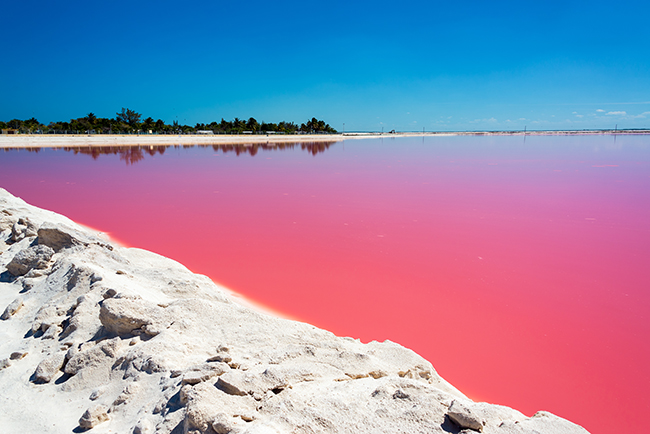
Las Coloradas has become a popular tourist attraction. It is easily reached independently or with guided tours. Best to arrive in early sunny afternoons from April to October to see the most vibrant pinks, which are caused by the high salt content of the salt flats and microorganisms, such as red-colored algae, plankton and brine shrimp. It is prohibited to enter the water, contrary to some of those misleading Instagram images. Some 30,000 flamingos are in this region, although typically not close enough to see them without binoculars. Guides are required, and entry charges range from $320 to $670 Mexican pesos, dependent upon if visitors opt for the walking, bicycle or “safari” 16-passenger van tours.
Most visitors also visit one of the beautiful uncrowded Gulf of Mexico beaches nearby for a swim, and then take a boat tour around the nearby biosphere of Rio Lagartos, about 30 minutes from Las Coloradas. The very Mexican town of Rio Lagartos has a mesmerizing waterfront area where many guides will offer to take you into the reserve in small boats. We spotted a huge crocodile just a foot away from us in the water at the marina area, drinking fresh water from a pipe.
Boat tours charge by the boat, not by the person. The best time to go is later in the day, when you will not only see flamingos and other shore birds, horseshoe crabs and maybe crocs, but also a dazzling sunset. If you like, you can also opt for a swim or a mud bath, which is supposedly beneficial for the skin.
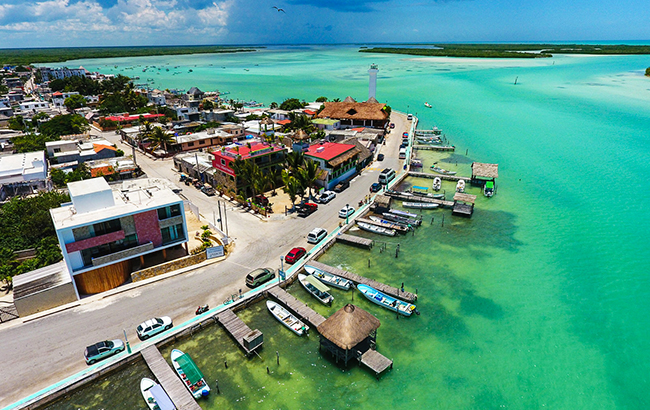
Rio Lagartos is worth a stay of one or two nights, as it is so peaceful and authentic. The Yuum-Ha Boutique Hotel, with six ample and comfortable rooms, is owned and operated by a very friendly British woman and her Mexican husband. The small, pretty pool with waterfall wall and the excellent restaurant (surprisingly gourmet offerings and presentation!) are a delight. I enjoyed walking through town, as locals played basketball in the plaza, fishermen relaxed with beers by their boats and children scampered about, scenes that felt out of yesteryear.
It is rather tragic that so many Yucatán visitors do not experience cenotes, the fresh water-filled caverns, or grottoes, that are formed by erosion of rainwater drilling down through the peninsula’s soft limestone. Traditionally, Yucatecáns obtained their fresh water from these (an estimated 3,000 in the Peninsula) but we tourists flock to them for snorkeling, swimming and photo ops. Wherever you go in the Yucatán, ask and you shall find a nearby cenote!
The Yucatán Peninsula is a destination in itself—go and know it. It’s so much more than sitting by a pool bar, although that is still a lovely pastime, too.

